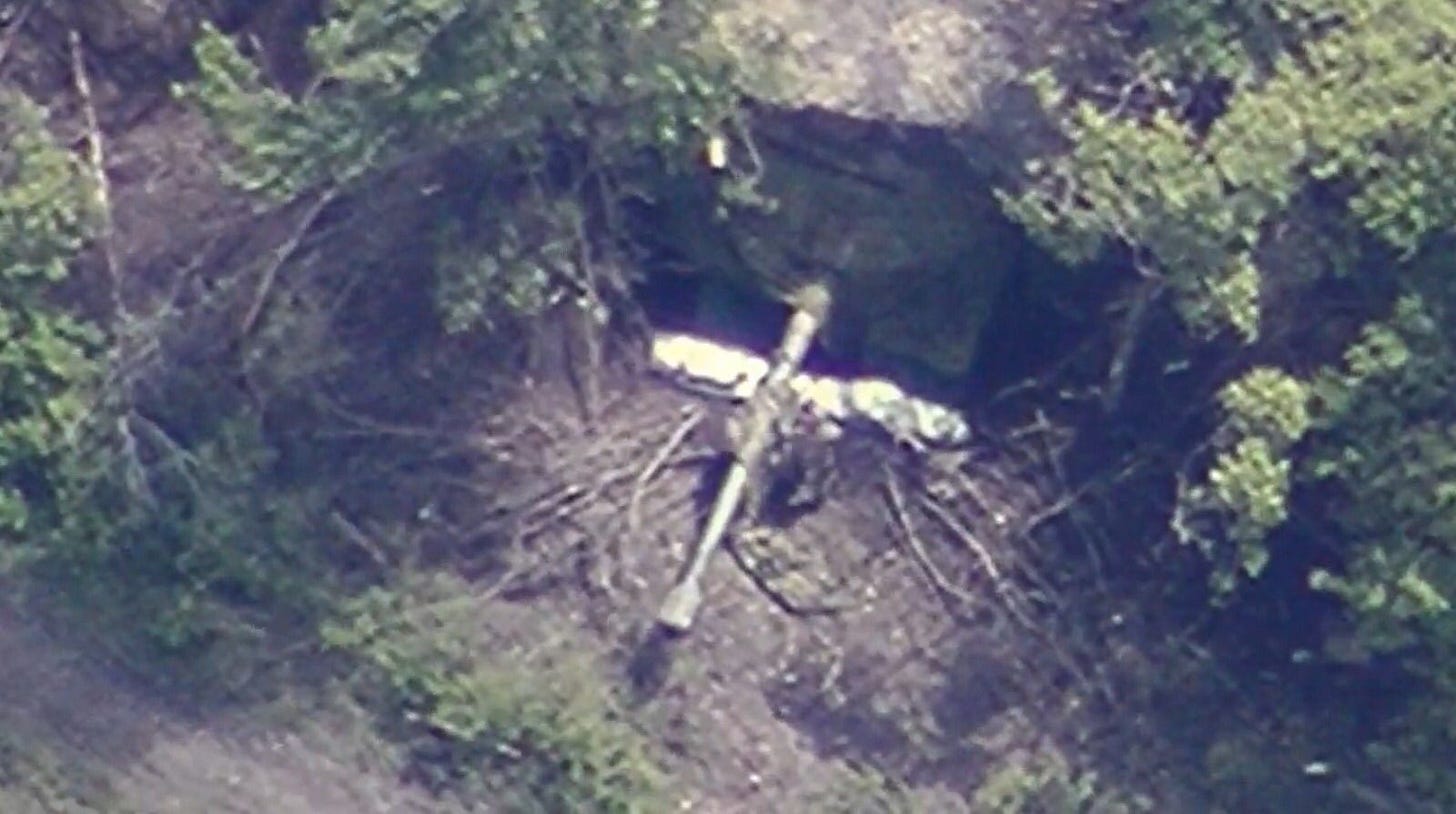Dug In and Camouflaged, Russian Artillery Is 'Quite Hard to Destroy'
On a drone-patrolled battlefield, mobile guns are much more vulnerable than buried ones are
The Russian artillery corps learned a hard lesson as Ukrainian drones and artillery knocked out more than 900 of Russia’s self-propelled howitzers in the first 39 months of Russia’s wider war on Ukraine.
That’s nearly half the SPHs the Russian land forces had in active service before Russia’s wider war on Ukraine kicked off in February 2022.
Russian gunners may have learned by now that, on a battlefield teaming with tiny drones, hidden guns are much more survivable than mobile guns are.
Kriegsforscher, a Ukrainian drone operator, reminded us of this new truism in a May 18 missive. “The problem with Russian artillery is that they don’t have a lot of SPGs,” or self-propelled guns. “I see zero problems with finding them.”
But buried up to their turrets and covered with branches and anti-drone nets, the guns are “quite hard to destroy,” Kriegsforscher added. “If they protect their barrels it takes us a lot of drones to take them out.”
That’s not to say Kriegsforscher’s drone team, which works closely with adjacent artillery batteries, isn’t destroying Russian guns, presumably in eastern Ukraine. Relentlessly surveilling and striking along the front line in April, the drones-and-guns team knocked out eight Russian towed howitzers in 12 days.
But many more Russian guns remain. In April, Kriegsforscher claimed they identified 44 towed artillery pieces on a 12-mile-across sector.
Don’t scoot
There was a time, during the Cold War, when the leading armies assumed mobility would protect their howitzers from enemy fire. They even coined a term for mobile fire missions: “shoot and scoot.” The idea was for SPHs or SPGs to roll into position, fire a few rounds and then roll away before the enemy’s own artillery rained down.
But the proliferation of small drones, which are everywhere all the time over the 700-mile front line of Russia’s 39-month wider war on Ukraine, rendered shoot-and-scoot obsolete. There’s no time to scoot.
“I do not know how else to say it, but shoot-and-scoot is 100-percent guaranteed to cause more deaths to artillery crew,” analyst Andrew Perpetua explained last year after watching countless drone videos depicting strikes on howitzers from both sides. “Flat out. If you shoot and scoot, you will die. Maybe not you personally but, on average, you will lose men and equipment. Shoot and scoot does not work.”
Digging in is the only option. (See video of a Ukrainian SPH, above.) And according to Perpetua, it may actually be easier to dig a hideout for a towed gun. “Instead of investing gajillions of dollars developing crappy SPGs that barely carry any ammo and often weigh obscene amounts of tons but can ‘shoot and scoot,’ countries should be investing in ultra lightweight, long-range towed guns that specialize in push and bush.”
That is, push into position, hide in the bushes—and stay there. It’s that method of fire support that’s preserving some portion of the Russian artillery in Kriegforscher’s sector. And it should work for the Ukrainians and their allies, too.
Read more:
Sloppy Russian Gunners Gave Away Their Howitzers' Positions
A single Ukrainian drone team, relentlessly surveilling along the front line in eastern Ukraine, has called in artillery and destroyed eight Russian towed howitzers in 12 days.



